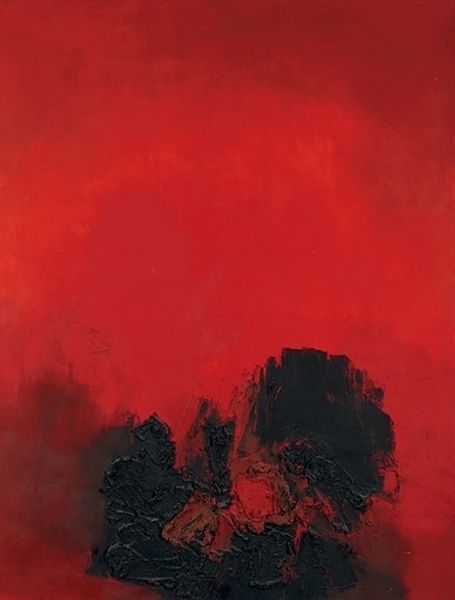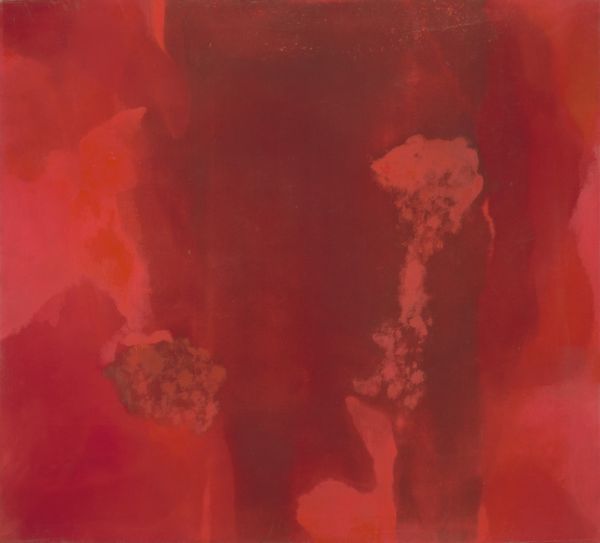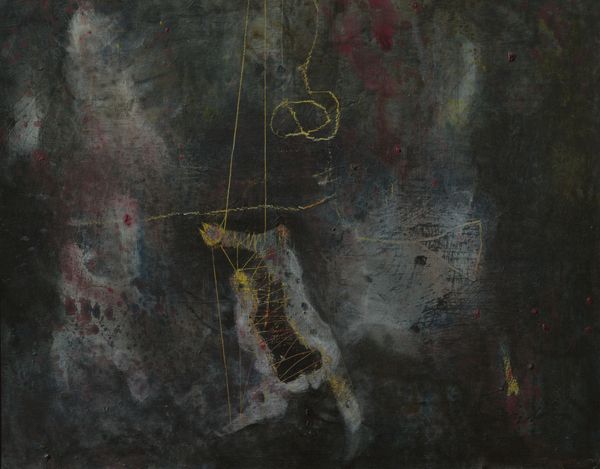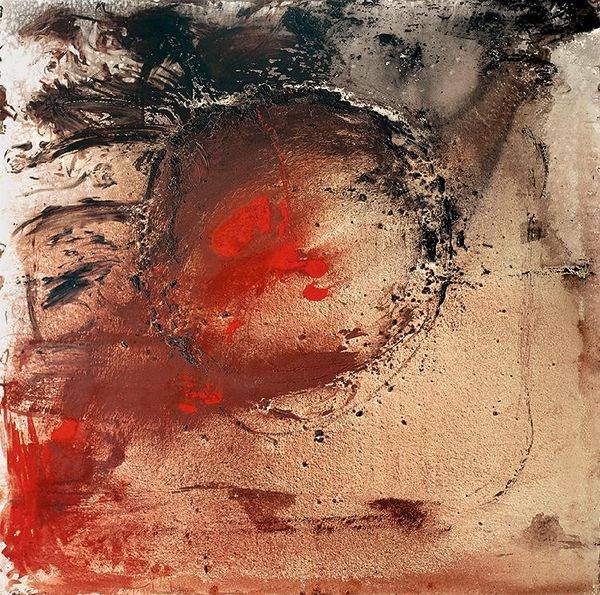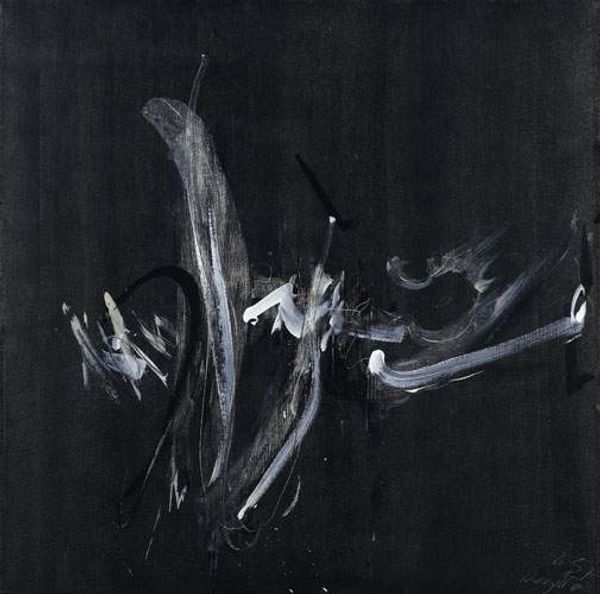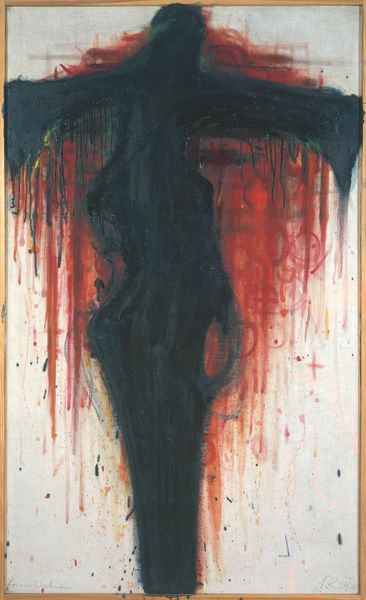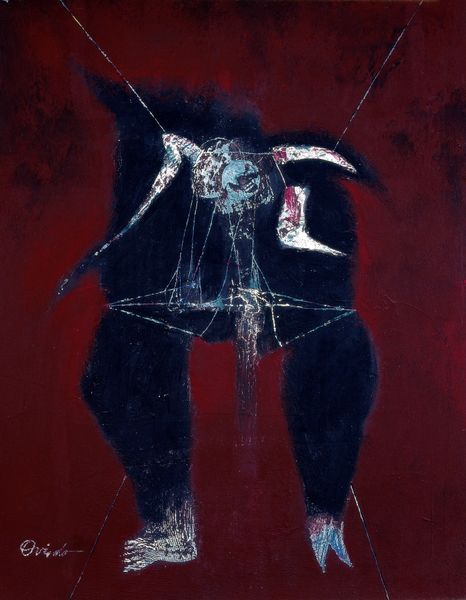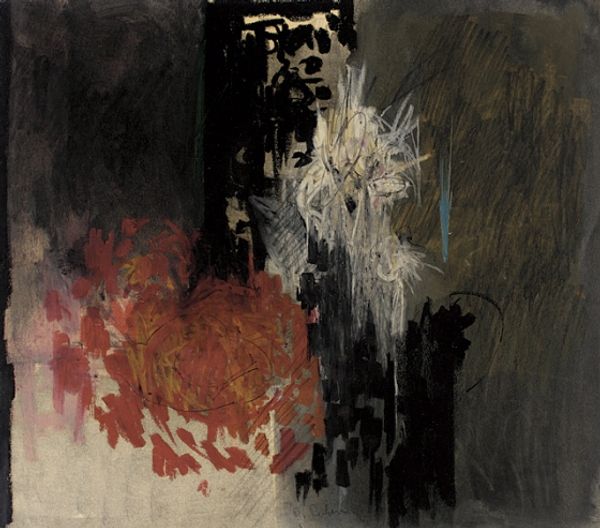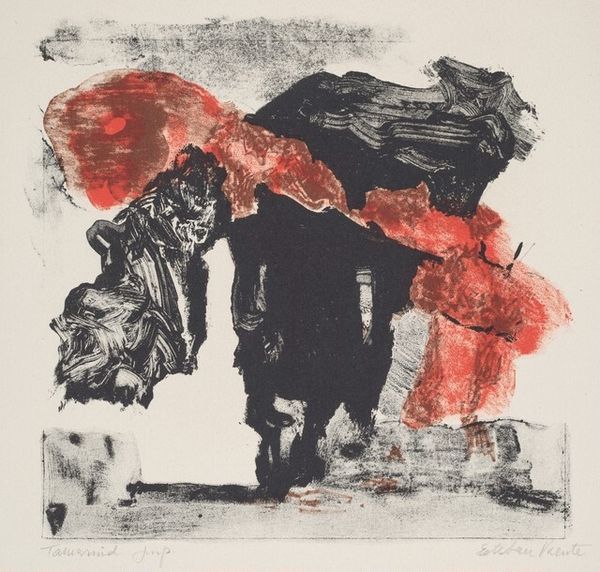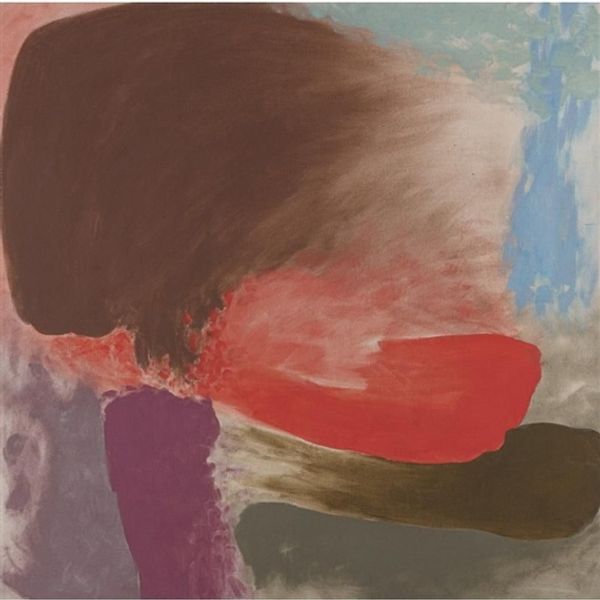
#
impressionistic
#
acrylic
#
abstract painting
#
painted
#
possibly oil pastel
#
neo expressionist
#
underpainting
#
paint stroke
#
abstract character
#
colour experimentation
Copyright: Luis Feito,Fair Use
Editor: We're looking at Luis Feito's "Número 460-A" from 1963, seemingly acrylic and perhaps oil pastel on canvas. The dark hues give it an almost somber feel, broken only by sharp strokes of red. What do you see in this piece? Curator: It’s interesting you pick up on that somber mood. Considering this was painted during Franco's dictatorship in Spain, and Feito was an exile in Paris, it’s hard not to view it through that socio-political lens. That stark contrast between the dark background and the flashes of red—could that represent the embers of resistance, perhaps? A defiance against the oppressive darkness? Editor: That's a powerful reading. I hadn't considered the historical context that directly. So the red isn't just color, it's potentially a symbol of political unrest? Curator: Potentially, yes. Think about how abstraction became a language in itself during times of censorship. Artists often used non-representational forms to express ideas that would otherwise be silenced. What do you think about the form itself; does it evoke anything in you? Editor: I initially just saw shapes. Now, considering your interpretation, I see fractured forms struggling against that dark mass. There's definitely a sense of conflict there. Is it too simplistic to read the black as representative of something negative or harmful? Curator: Not necessarily simplistic. Consider the psychological weight of darkness, its association with ignorance, repression, or even death. Feito could very well be playing with those established symbolic associations to amplify the painting's message. The interplay of these contrasting elements really asks us to think about the role of the artist in times of political turmoil. Editor: It definitely makes me think about the artist’s position as a critic. I think I have a better understanding of how sociopolitical elements could transform my reading of art now. Thanks for sharing. Curator: Absolutely. It’s through that kind of contextual investigation that these artworks gain depth and relevance.
Comments
No comments
Be the first to comment and join the conversation on the ultimate creative platform.

